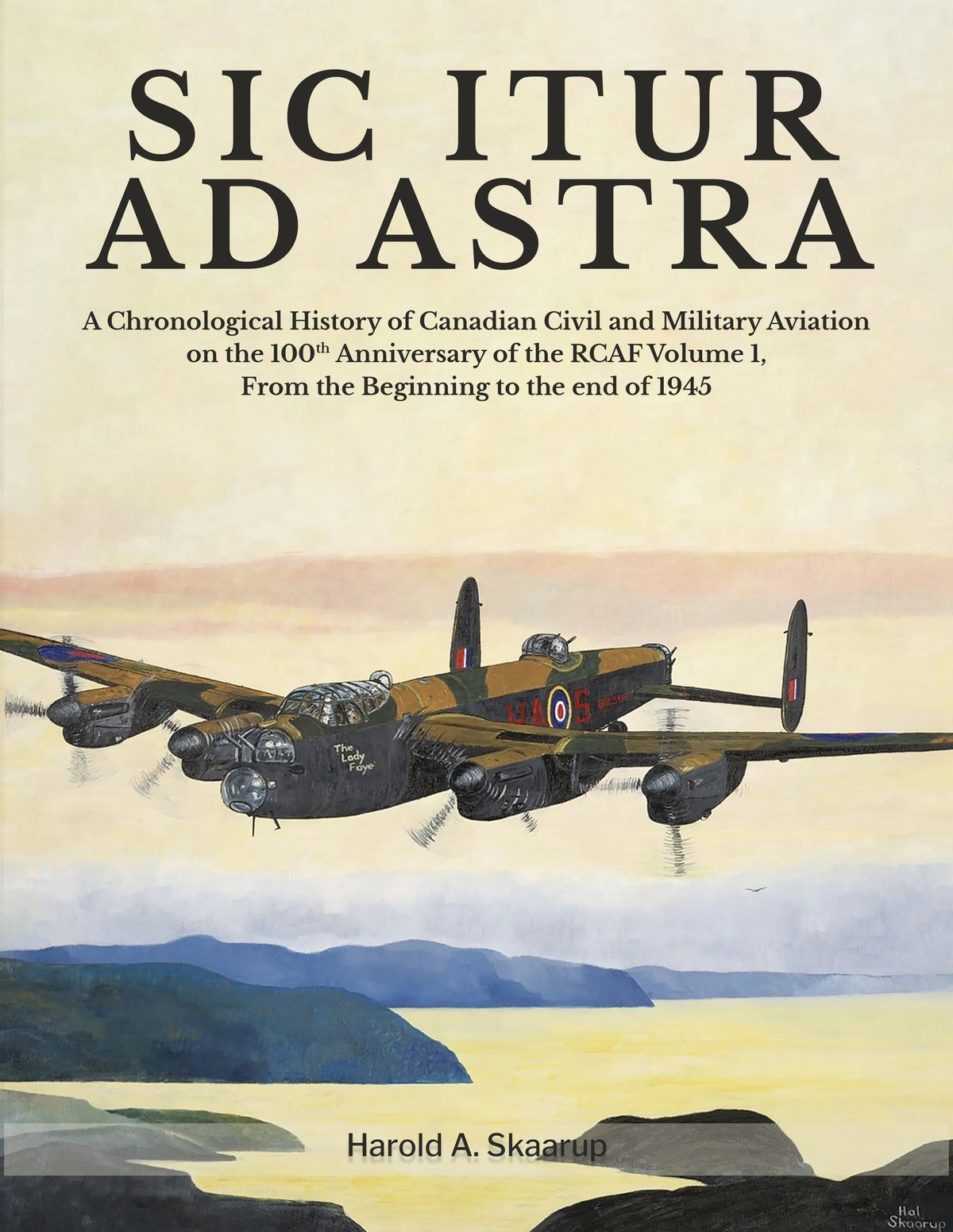Canadian Warplanes 5: Blackburn Firebrand
Blackburn Firebrand

(World War Photos)
Blackburn Firebrand TF.5 (Serial No. EK726), 1948.
The Blackburn Firebrand was a British single-engine strike fighter for the Fleet Air Arm of the Royal Navy designed during the Second World War by Blackburn Aircraft. Originally intended to serve as a pure fighter, its unimpressive performance and the allocation of its Napier Sabre piston engine by the Ministry of Aircraft Production for the Hawker Typhoon caused it to be redesigned as a strike fighter to take advantage of its load-carrying capability. Development was slow and the first production aircraft was not delivered until after the end of the war. Only a few hundred were built before it was withdrawn from front-line service in 1953. (Wikipedia)

(Mrs Sheri Somerville Street Photo)
RCAF S/L Ian “Curly” Somerville served in the Royal Aircraft Establishment‘s Foreign Aircraft Flight at Farnborough. A graduate of the Empire Test Pilots School, RAF Boscombe Down, he test flew the Blackburn B-37 Firebrand single-seat carrier-borne and land-based torpedo strike fighter, Avro 683 Lancaster, Gloster Meteor, de Havilland DH 98 Mosquito, Hawker Tempest and many other aircraft including a number of ex-Luftwaffe types.[1]

(Royal Navy Photo)
Blackburn Firebrand TF Mk. IV (Serial No. EK601).
Aircraft was originally designed as a single-seat fighter around the Napier Sabre III 24-cylinder liquid-cooled H-type engine. The first unarmed prototype flew on February 27, 1942, and the Mk. I prototype with full armament and military equipment five months later. At that time the Sabre engine was just going into production and because the Hawker Typhoon was more fully developed than the Firebrand, the Typhoon received priority for the new engine. It was therefore necessary to find an alternative power-plant for the plane and at the same time it was decided to widen its sphere of usefulness by converting it into what is commonly termed a “strike” aircraft, that is, one capable of striking with torpedoes, heavy bombs or rockets and, after release of its load, of operating as an offensive fighter. Only nine production F Mk. I aircraft were built.
The Firebrand was unusual in that it had an airspeed indicator mounted outside the cockpit so that, on landing, the pilot did not have to look down into the cockpit to read the instrument, foreshadowing the development of modern head-up displays. At the time the service trials were underway, the Fleet Air Arm was operating the Supermarine Seafire as a shipborne fighter and a new role as a torpedo bomber was then planned for the Firebrand. The first attack version, the Fireband TF Mk.II (B-45), an adaptation of the Mk. I flew on 31 March 1943. It featured a slightly enlarged wing to allow the carrying of a torpedo placed between the main landing gear. Like the Mk. I the TF Mk. II had a limited production of 12 units, and was followed by the TF Mk. III with the Bristol Centaurus VII star engine. After the first flight on 21 December 1943, problems arose: the engine produced a greater rollover torque than the Sabre and the rudder controls were ineffective at take-off. The TF Mk. III was declared incompatible for carrier operations and work turned to an airframe better suited to the Centaurus.
The aircraft had killed two test pilots when, after six months of modifications, Dennis Cambell achieved the first successful landing. The newly developed TF Mk. IV (B-46) carried the new Centaurus IX engine, with an increased tail area for better low-speed stability. The rudder was overhanging horn trimmed and the wings were fitted with airbrakes on the lower and upper surface. The first flight of the TF Mk. IV took place on 17 May 1945. It was the first version of the Firebrand to go into serial production with 102 units produced. The next, the TF.5, had slight aerodynamic improvements and was also mass-produced with 68 units entering service; 40 TF IVs were converted to TF.Vs.The last version produced was the TF Mk. 5A.

(World War Photos)
Blackburn Firebrand TF.5, HMS Illustrious No. 813 Squadron FAA, Royal Navy.

(IWM Photo, A 14848)
A Blackburn Firebrand IV warming up on the flight deck of HMS Illustrious during aircraft trials in the Clyde. The chocks are just being removed from around the wheels. The Blackburn Firebrand IV, the first single seater torpedo fighter ever built in Britain, is powered by a Bristol Centaurus engine and is armed with four cannons.

(IWM Photo, A 14851)
Blackburn Firebrand illustrating the huge flaps of the aircraft as it taxies up the flight deck.

(World War Photo)
Blackburn Firebrand Mk. III (Serial No. DK372).
.avif)
(Happy Days Photo and Art)
Blackburn Firebrand TF.5 (Serial No. EK7248).

(World War Photos)
Blackburn Firebrand Mk. 5 (Serial No. EK726).

(World War Photos)
Blackburn Firebrand Mk. III (Serial No. DK372), with wings folded.

(BAE Systems Photo)
Blackburn Firebrand.

(RAF Photo)
Blackburn Firebrand Mk. I,(Serial No. .DD815), the third Firebrand Mk. I prototype.

(RAF Photo)
Blackburn Firebrand.

(RAF Photo)
Blackburn Firebrand Mk. IV torpedo fighter.

(IWM Photo, A 30647)
Blackburn Firebrand Mk. IV torpedo fighter at Heston Aerodrome, UK.






